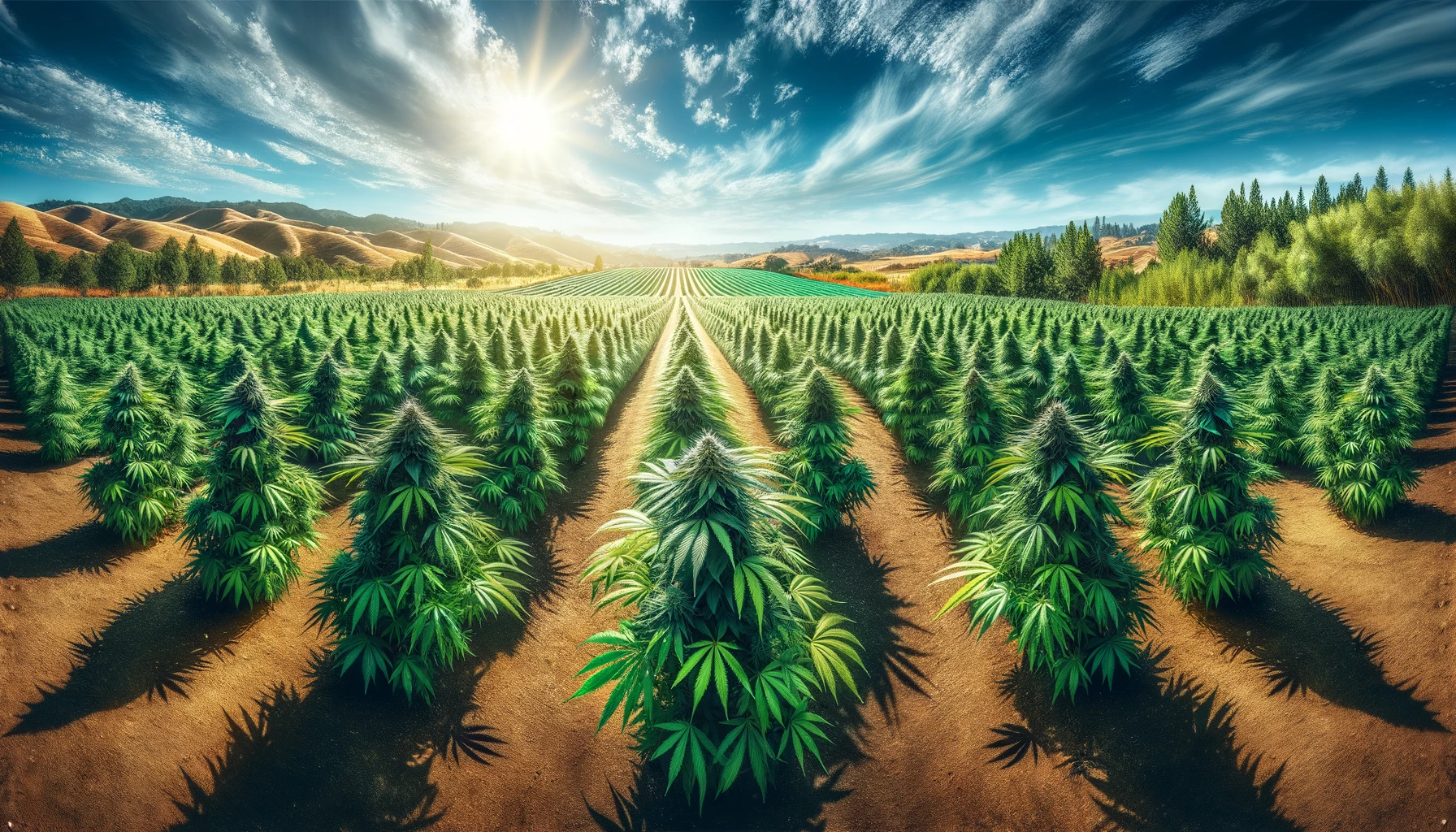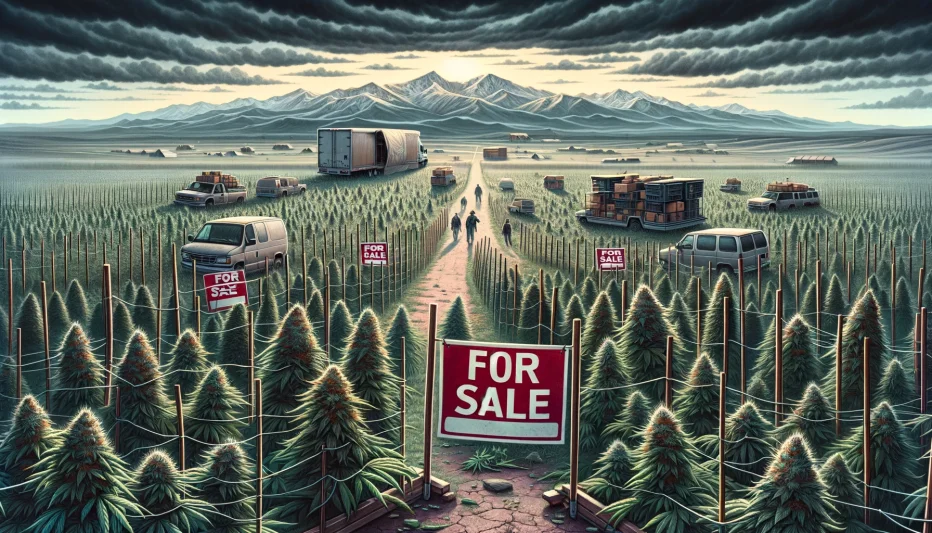he Emerald Triangle—Humboldt, Mendocino, and Trinity counties in Northern California—is the undisputed epicenter of American cannabis. Its legendary status comes from decades of cultivation, activism, and defiance against prohibition. This region has shaped cannabis culture, genetics, and the industry as a whole, influencing growers and enthusiasts worldwide.
From the first seeds planted in hidden valleys to becoming the battleground of the War on Drugs, and finally, the transition to a legal market, the Emerald Triangle’s history is filled with resilience, rebellion, and transformation. Let’s explore how this region became the Napa Valley of Weed and what its future holds.

The Early Days: Before Cannabis Took Root
Long before cannabis became the region’s calling card, the Wiyot, Yurok, and Karuk tribes lived in harmony with the land. They thrived off the dense forests and rivers, cultivating plants for medicine, food, and spiritual purposes.
The Arrival of Settlers and Agricultural Beginnings
- In the mid-1800s, settlers arrived during the California Gold Rush, bringing timber, cattle ranching, and fruit farming.
- The region’s isolation and rugged terrain made large-scale agriculture challenging, but those same qualities would later make it ideal for hidden cannabis farms.
While cannabis had yet to make an appearance, the Emerald Triangle was already known for its self-sufficient farming communities, which would later play a huge role in the underground cannabis movement.
The Back-to-the-Land Movement and the Birth of a Cannabis Empire
In the 1960s and 70s, the counterculture revolution sparked a wave of young Americans leaving city life to return to nature. Inspired by peace, sustainability, and self-reliance, thousands of Vietnam War veterans, hippies, and environmentalists settled in the remote lands of Northern California.
Why the Emerald Triangle?
- Cheap land and secluded forests provided the perfect refuge.
- The area’s Mediterranean climate was ideal for cannabis cultivation.
- The tight-knit community embraced a back-to-the-land philosophy, making it easier for growers to share knowledge and trade.
The Rise of Guerrilla Cultivation
- Early growers started with small, hidden gardens.
- As demand for high-quality cannabis grew in the U.S., local farmers scaled up their operations.
- By the late 1970s, Humboldt and Mendocino cannabis had gained a national reputation for being some of the best in the world.
The underground cannabis economy became the region’s main source of income, rivaling traditional farming.

The War on Drugs: A Battle for Survival
As the Emerald Triangle’s cannabis reputation grew, it drew unwanted attention from law enforcement.
The CAMP Raids
In 1983, the Campaign Against Marijuana Planting (CAMP) was launched—a military-style crackdown on illegal cannabis farms.
- Helicopters patrolled the forests, searching for hidden grows.
- SWAT teams raided farms, seizing plants and arresting growers.
- Many small farmers were forced deeper underground, using innovative growing techniques to evade detection.
Despite millions of dollars spent on enforcement, the cannabis industry continued to grow, proving just how deeply rooted it had become.
Legalization and Its Consequences
In 1996, California passed Proposition 215, legalizing medical marijuana—a turning point for the Emerald Triangle.
The Shift to Legal Growing
- Many legacy farmers transitioned from the black market to licensed medical cannabis production.
- The region became known for high-quality, organic cannabis.
- The first cannabis dispensaries opened, giving farmers a legal way to sell their product.
2016: Full Legalization and New Challenges
When California legalized recreational cannabis under Proposition 64, many expected the Emerald Triangle to thrive—but instead, small farmers faced new struggles.
The Impact of Legalization
- High licensing fees and taxes made it difficult for small growers to compete.
- Corporate cannabis companies flooded the market with mass-produced weed.
- Many legacy growers went back to the underground market, unable to afford compliance costs.
Despite these hurdles, the Emerald Triangle remains the cultural and genetic backbone of California cannabis.

The Emerald Triangle’s Influence on Cannabis Culture
Beyond economics, the Emerald Triangle has left a huge mark on cannabis culture, influencing strains, farming techniques, and lifestyle.
Legendary Strains Born in the Emerald Triangle
Some of the world’s most famous cannabis genetics trace their roots to this region, including:
- Humboldt OG
- Mendocino Purps
- Blue Dream
- Green Crack
- Trainwreck
These strains have shaped global cannabis markets, influencing breeders and growers everywhere.
Cannabis Tourism: A New Frontier
With legalization, weed-friendly tourism has boomed in the region:
- Cannabis farm tours allow visitors to experience the growing process firsthand.
- Cannabis-friendly Airbnbs and lodges cater to enthusiasts.
- Events like Northern Nights Music Festival blend cannabis, music, and culture.
For those wanting to explore California’s cannabis scene, a visit to the Emerald Triangle is a must. Check out our guide to 420-friendly travel destinations.

Challenges Facing the Emerald Triangle Today
The region faces new economic and environmental challenges, putting pressure on small farmers.
Economic Pressures
- Falling cannabis prices due to oversupply are hurting local farmers.
- Strict regulations and taxes favor large corporations over small growers.
- Some are pushing for cannabis appellations, similar to wine regions, to protect the Emerald Triangle’s brand and reputation.
Environmental Concerns
- Illegal water use and deforestation have led to increased government oversight.
- Wildfires, worsened by climate change, have devastated many farms.
The Fight for Federal Legalization
While cannabis is legal in California, federal prohibition still creates banking and business challenges. Many hope federal legalization will help small farmers compete against corporate cannabis.

The Future of the Emerald Triangle
Despite the challenges, the Emerald Triangle remains at the heart of cannabis culture. The region’s legacy farmers continue to innovate, focusing on craft, organic, and sustainable cannabis.
Emerging Trends
- Cannabis appellations could establish Humboldt, Mendocino, and Trinity as official premium cannabis regions.
- Sustainable farming practices are becoming the industry standard.
- Weed-friendly tourism is growing, attracting cannabis enthusiasts from around the world.
The Emerald Triangle has endured decades of challenges—from the War on Drugs to corporate takeovers—but it continues to thrive, proving that it is far more than just a place; it is a movement.
The Emerald Triangle’s story is one of resilience, defiance, and passion. From its hippie homesteaders to today’s craft cannabis pioneers, this region has shaped the way we grow, consume, and appreciate cannabis.
For cannabis lovers, a visit to the Emerald Triangle isn’t just a trip—it’s a pilgrimage to the birthplace of America’s finest weed.
Thinking of exploring the Emerald Triangle? Check out our guide to California’s top cannabis tourism destinations and discover the best 420-friendly places to stay, eat, and explore. 🌿
O


